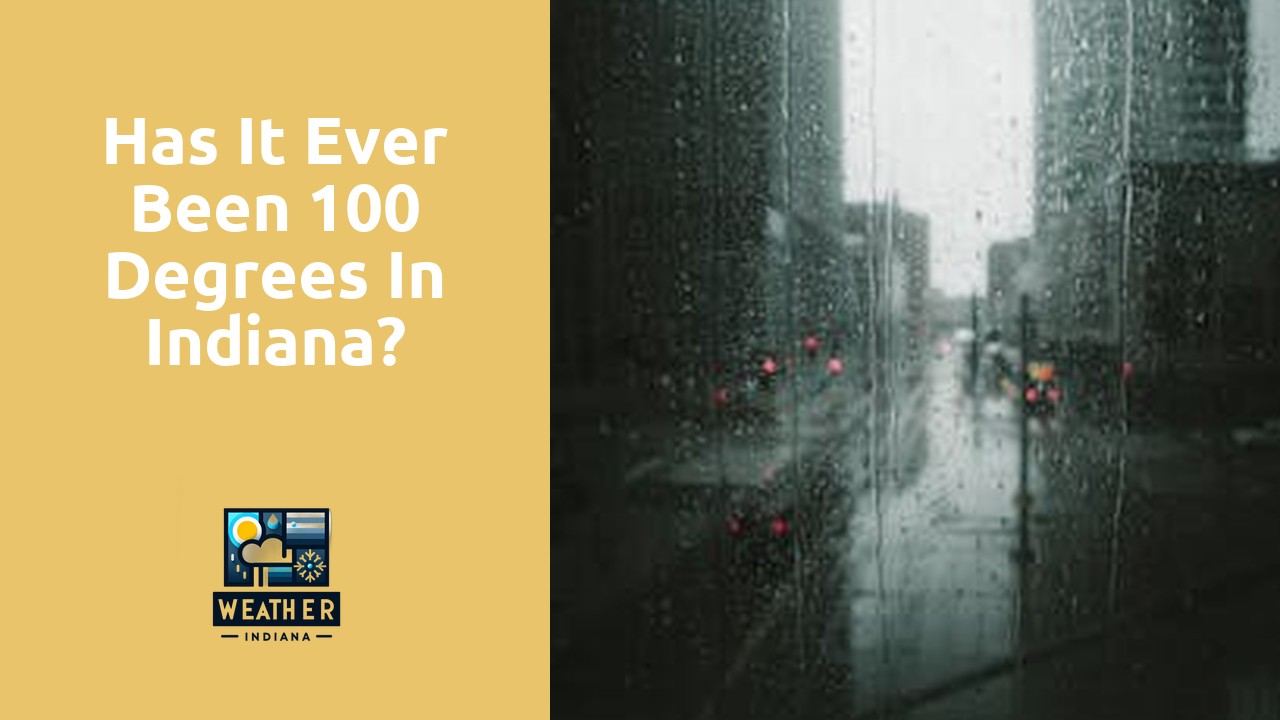Table Of Contents
Future Projections for Temperature Trends in Indiana
Future projections for temperature trends in Indiana indicate a notable increase in average temperatures over the coming decades. The state is likely to experience more frequent and prolonged heatwaves, with temperatures exceeding 100 degrees becoming increasingly common. This upward trend in temperatures poses significant challenges for the residents of Indiana, particularly in terms of health risks associated with extreme heat exposure.
Furthermore, these rising temperatures may also have far-reaching consequences for various sectors such as agriculture, energy consumption, and infrastructure maintenance. The projected temperature changes could lead to reduced crop yields, higher demands for cooling systems, and greater strain on roads and buildings. It is imperative for policymakers, city planners, and communities to proactively address these anticipated temperature shifts to ensure the well-being and resilience of Indiana’s residents in the face of a warming climate.
Predicted Temperature Changes and Their Consequences
Predicted temperature changes in Indiana are expected to bring about significant consequences for the state and its residents. With rising global temperatures and changing climate patterns, Indiana is projected to experience increased frequency and intensity of heatwaves. This uptick in extreme heat events can pose risks to public health, especially for vulnerable populations such as the elderly, children, and individuals with pre-existing health conditions. Additionally, high temperatures can have detrimental effects on agriculture, leading to reduced crop yields and economic strain for farmers in the region.
As temperatures continue to rise in Indiana, there are concerns about the impact on the state’s infrastructure and natural resources. Higher temperatures can contribute to the degradation of roads, bridges, and other critical infrastructure, posing challenges for maintenance and repair efforts. Furthermore, changing temperature patterns can disrupt ecosystems and biodiversity, affecting native species and wildlife habitats in Indiana. It is essential for policymakers, local communities, and individuals to proactively address these predicted temperature changes and their associated consequences to mitigate potential risks and safeguard the well-being of Hoosiers.
Comparison of Indiana’s Temperatures with National Averages
Indiana’s average temperatures typically align closely with the national averages, but certain years have brought unprecedented heat waves to the state. These extreme temperature events can push Indiana’s average temperatures above the national benchmark, drawing attention to the potential impacts of climate change on regional weather patterns.
Examining Indiana’s temperatures in relation to national averages provides valuable insights into the state’s vulnerability to shifting climate patterns. By tracking these fluctuations over time, researchers can better understand the broader implications of temperature changes both locally and nationally. This comparative analysis serves as a crucial tool for policymakers and environmental agencies to develop proactive measures to address the challenges posed by rising temperatures in Indiana.
Indiana’s Position in the Spectrum of U.S. Temperature Extremes
Indiana has experienced a wide range of temperatures, placing it among the spectrum of U.S. temperature extremes. The state is susceptible to both frigid winters and scorching summers, showcasing the diversity of its climate patterns. With temperature records showing fluctuations from below freezing to over a hundred degrees Fahrenheit, Indiana’s position in the spectrum highlights its vulnerability to extreme weather conditions.
The variability in Indiana’s temperatures not only impacts the residents but also poses challenges for infrastructure, agriculture, and public health systems. As the state grapples with fluctuating weather patterns, it becomes crucial to analyze and understand the factors contributing to these temperature extremes. By examining Indiana’s position in the spectrum of U.S. temperature extremes, policymakers and stakeholders can develop informed strategies to mitigate the impacts of extreme heat or cold events on the state’s communities and resources.
Emergency Response Plans for High Temperature Events in Indiana
Emergency response plans for high temperature events in Indiana are crucial to ensure the safety and well-being of residents during extreme heat waves. These plans involve coordination between various agencies, such as local government departments, emergency services, and community organizations, to effectively respond to the challenges posed by soaring temperatures. One key aspect of these plans is the establishment of cooling centers in strategic locations across the state to provide a refuge for individuals who may be vulnerable to heat-related illnesses.
Additionally, emergency response plans for high temperature events in Indiana also emphasize the importance of public awareness campaigns to educate the community on ways to stay safe during periods of extreme heat. These campaigns typically include guidance on staying hydrated, avoiding prolonged exposure to the sun, and recognizing the signs of heat-related illnesses. By proactively disseminating this information through various channels, such as social media, local news outlets, and community workshops, authorities aim to empower residents to take necessary precautions and minimize the risks associated with high temperatures.
Government Initiatives to Protect Communities during Heat Waves
Government initiatives play a crucial role in ensuring the safety and well-being of communities during heat waves in Indiana. One key strategy is the development of heat emergency response plans that outline specific actions to be taken in the event of extreme temperatures. These plans typically involve coordination among various government agencies, emergency services, and community organizations to provide timely assistance to those most vulnerable to heat-related illnesses.
Furthermore, government initiatives focus on increasing public awareness of heat wave risks and educating residents on the importance of staying hydrated, seeking shelter in cool places, and recognizing the signs of heat exhaustion. By disseminating information through various channels such as social media, community outreach programs, and public service announcements, authorities aim to empower individuals to take proactive measures to protect themselves and their loved ones during periods of intense heat. Additionally, these initiatives often emphasize the importance of checking on vulnerable populations, such as the elderly, children, and individuals with chronic medical conditions, to ensure their safety and well-being during extreme heat events.
FAQS
Has Indiana ever experienced temperatures of 100 degrees Fahrenheit?
Yes, Indiana has recorded temperatures of 100 degrees Fahrenheit or higher in the past.
How often does Indiana reach temperatures of 100 degrees Fahrenheit?
Temperatures of 100 degrees Fahrenheit are rare in Indiana but can occur during periods of extreme heat waves.
What are the potential consequences of temperatures reaching 100 degrees in Indiana?
High temperatures in Indiana can lead to health risks such as heat exhaustion, heat stroke, and dehydration, as well as impacts on agriculture and infrastructure.
Are there any measures in place to protect the residents of Indiana during extreme heat events?
Yes, Indiana has emergency response plans in place to address high temperature events, including cooling centers, public health advisories, and community outreach programs.
How can individuals protect themselves during periods of extreme heat in Indiana?
To stay safe during extreme heat in Indiana, individuals should stay hydrated, avoid outdoor activities during peak heat hours, and seek shelter in air-conditioned spaces when necessary.

